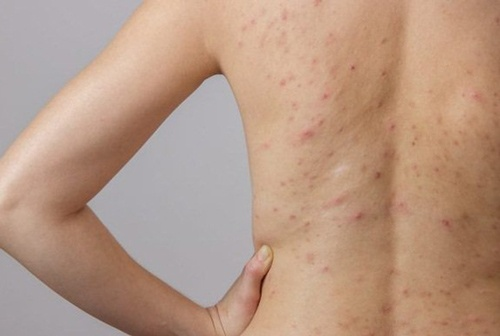Folliculitis isn't life-threatening, but it can be itchy, sore and embarrassing. Severe infections can cause permanent hair loss and scarring. If you have a mild case, it'll likely clear in a few days with basic self-care measures. For more serious or recurring folliculitis, you may need to see a doctor for prescription medicine.

1. What is Folliculitis?
Folliculitis is a common skin condition in which hair follicles become inflamed. It's usually caused by a bacterial or fungal infection. At first it may look like small red bumps or white-headed pimples around hair follicles — the tiny pockets from which each hair grows. The infection can spread and turn into nonhealing, crusty sores.
Certain types of folliculitis are known as hot tub rash, razor bumps and barber's itch.
2. Symptoms of Folliculitis
Folliculitis signs and symptoms include:
- Clusters of small red bumps or white-headed pimples that develop around hair follicles
- Pus-filled blisters that break open and crust over
- Itchy, burning skin
- Painful, tender skin
- A large swollen bump or mass
3. Types of folliculitis
The two main types of folliculitis are superficial and deep. The superficial type involves part of the follicle, and the deep type involves the entire follicle and is usually more severe.
Forms of superficial folliculitis include:
- Bacterial folliculitis. This common type is marked by itchy, white, pus-filled bumps. It occurs when hair follicles become infected with bacteria, usually Staphylococcus aureus (staph). Staph bacteria live on the skin all the time. But they generally cause problems only when they enter your body through a cut or other wound.
- Hot tub folliculitis (pseudomonas folliculitis). With this type you may develop a rash of red, round, itchy bumps one to two days after exposure to the bacteria that causes it. Hot tub folliculitis is caused by pseudomonas bacteria, which is found in many places, including hot tubs and heated pools in which the chlorine and pH levels aren't well-regulated.
- Razor bumps (pseudofolliculitis barbae). This is a skin irritation caused by ingrown hairs. It mainly affects men with curly hair who shave too close and is most noticeable on the face and neck. People who get bikini waxes may develop barber's itch in the groin area. This condition may leave dark raised scars (keloids).
- Pityrosporum (pit-ih-ROS-puh-rum) folliculitis. This type produces chronic, red, itchy pustules on the back and chest and sometimes on the neck, shoulders, upper arms and face. This type is caused by a yeast infection.
Forms of deep folliculitis include:
- Sycosis barbae. This type affects males who have begun to shave.
- Gram-negative folliculitis. This type sometimes develops if you're receiving long-term antibiotic therapy for acne.
- Boils (furuncles) and carbuncles. These occur when hair follicles become deeply infected with staph bacteria. A boil usually appears suddenly as a painful pink or red bump. A carbuncle is a cluster of boils.
- Eosinophilic folliculitis. This type mainly affects people with HIV/AIDS. Signs and symptoms include intense itching and recurring patches of bumps and pimples that form near hair follicles of the face and upper body. Once healed, the affected skin may be darker than your skin was previously (hyperpigmented). The cause of eosinophilic folliculitis isn't known.
4. Causes of Folliculitis
Folliculitis is most often caused by an infection of hair follicles with Staphylococcus aureus (staph) bacteria. Folliculitis may also be caused by viruses, fungi and even an inflammation from ingrown hairs.
Follicles are densest on your scalp, and they occur everywhere on your body except your palms, soles, lips and mucous membranes.
5. Risk factors
Anyone can develop folliculitis. But certain factors make you more susceptible to the condition, including:
- Having a medical condition that reduces your resistance to infection, such as diabetes, chronic leukemia and HIV/AIDS
- Having acne or dermatitis
- Taking some medications, such as steroid creams or long-term antibiotic therapy for acne
- Being a male with curly hair who shaves
- Regularly wearing clothing that traps heat and sweat, such as rubber gloves or high boots
- Soaking in a hot tub that's not maintained well
- Causing damage to hair follicles by shaving, waxing or wearing tight clothing.